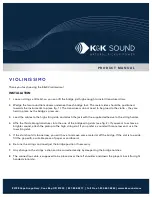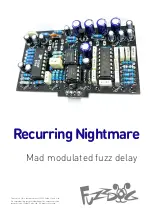
6
WIKA operating instructions, model GDM-RC-100-T
EN
14499439.01 01/2022 EN/DE
3. Safety
3.1 Explanation of symbols
WARNING!
... indicates a potentially dangerous situation that can result in serious injury
or death, if not avoided.
CAUTION!
... indicates a potentially dangerous situation that can result in light injuries
or damage to property or the environment, if not avoided.
Information
... points out useful tips, recommendations and information for efficient
and trouble-free operation.
3.2 Intended use
The intended use of model GDM-RC-100-T is to monitor the gas density of insulating
gases.
Wherever the gas density of SF₆ gas must be indicated locally and, at the same time,
circuits need to be switched, the model GDM-RC-100-T hybrid gas density monitor finds
its use.
The integrated or attached digital transmitter transmits the parameters of gas density,
pressure and temperature as electrical signals via the Modbus
®
-RTU protocol.
The integrated or attached analogue transmitter transmits the absolute pressure refer-
enced to 20 °C [68 °F] or the gas density in g/l for SF₆ gas as a 4 ... 20 mA signal.
Gas density monitors are modified pressure measuring instruments with switch contacts,
specially developed for the use of SF₆ gas and other insulating gases. Temperature influ
-
ences acting on the enclosed gas are compensated by a compensation system.
The gas density monitors are specially designed for the respective application in switch-
gear (pure SF₆ gas, gas mixtures, calibration pressure, switch points ...). Before use, check
whether this instrument is suitable for the intended application.
The insulation values (air gaps and creepage distances) are sized for the following
ambient conditions in accordance with EN 61010-1:2010:
■
Altitude up to 2,000 m
■
Overvoltage category II
■
Pollution degree 2
■
Relative humidity: 0 ... 95 % non-condensing (per DIN 40040)
Only use the instrument in applications that lie within its technical performance limits
(e.g. max. ambient temperature, material compatibility, ...).
→ For performance limits, see chapter 1 “General information”.
3. Safety







































